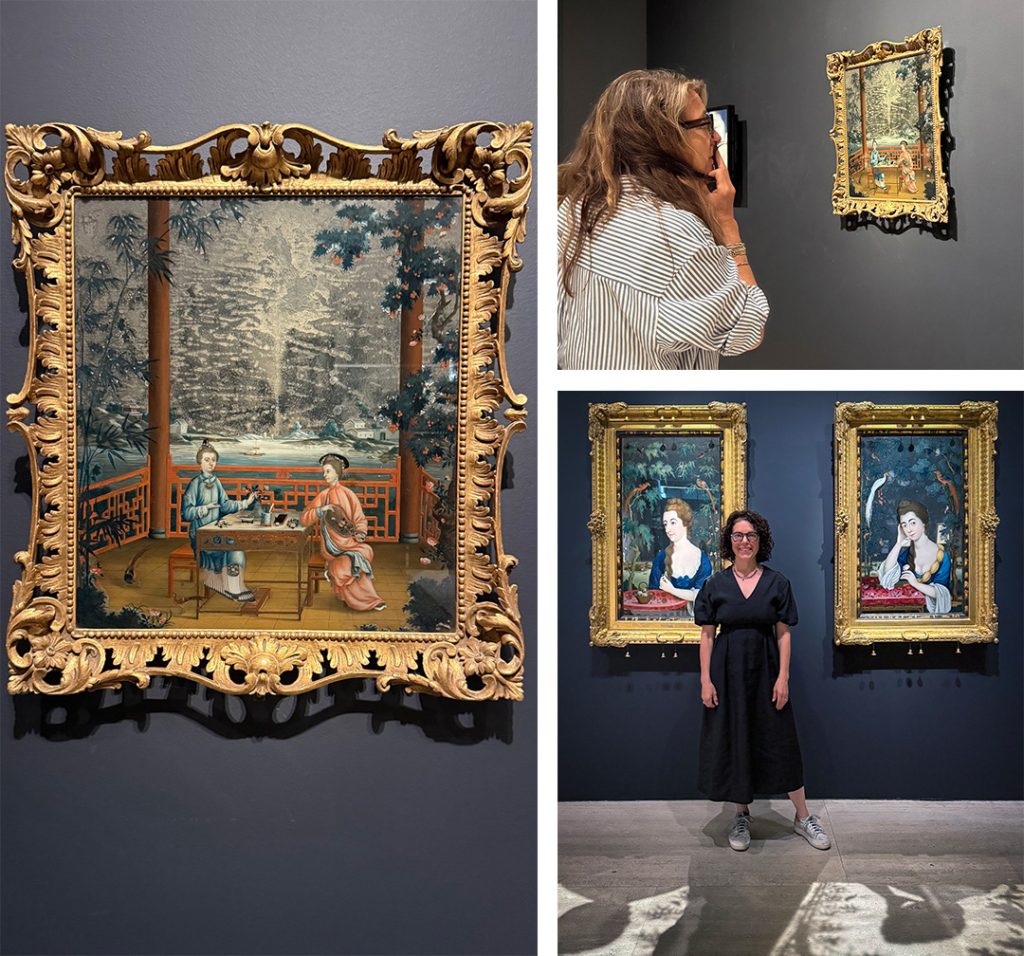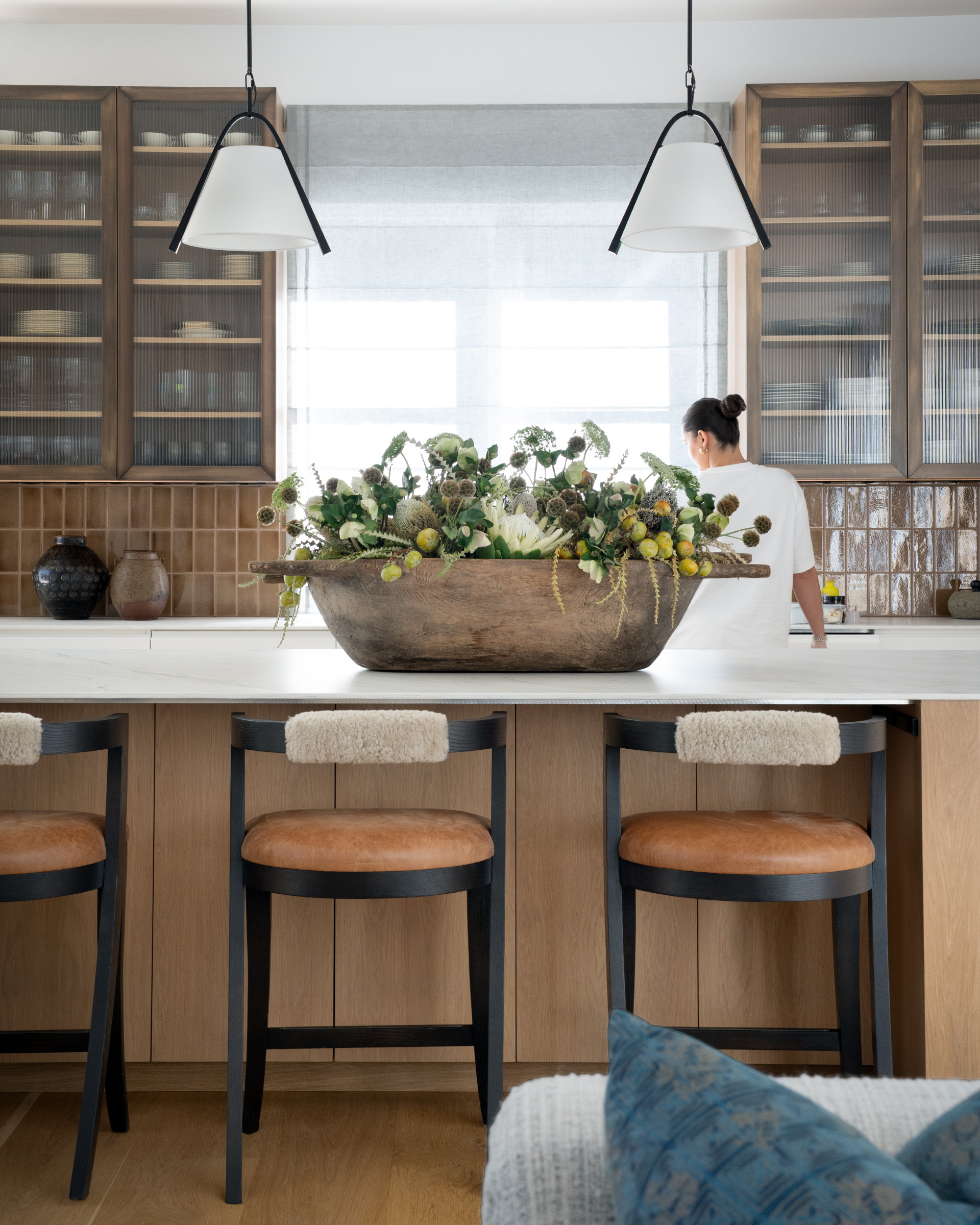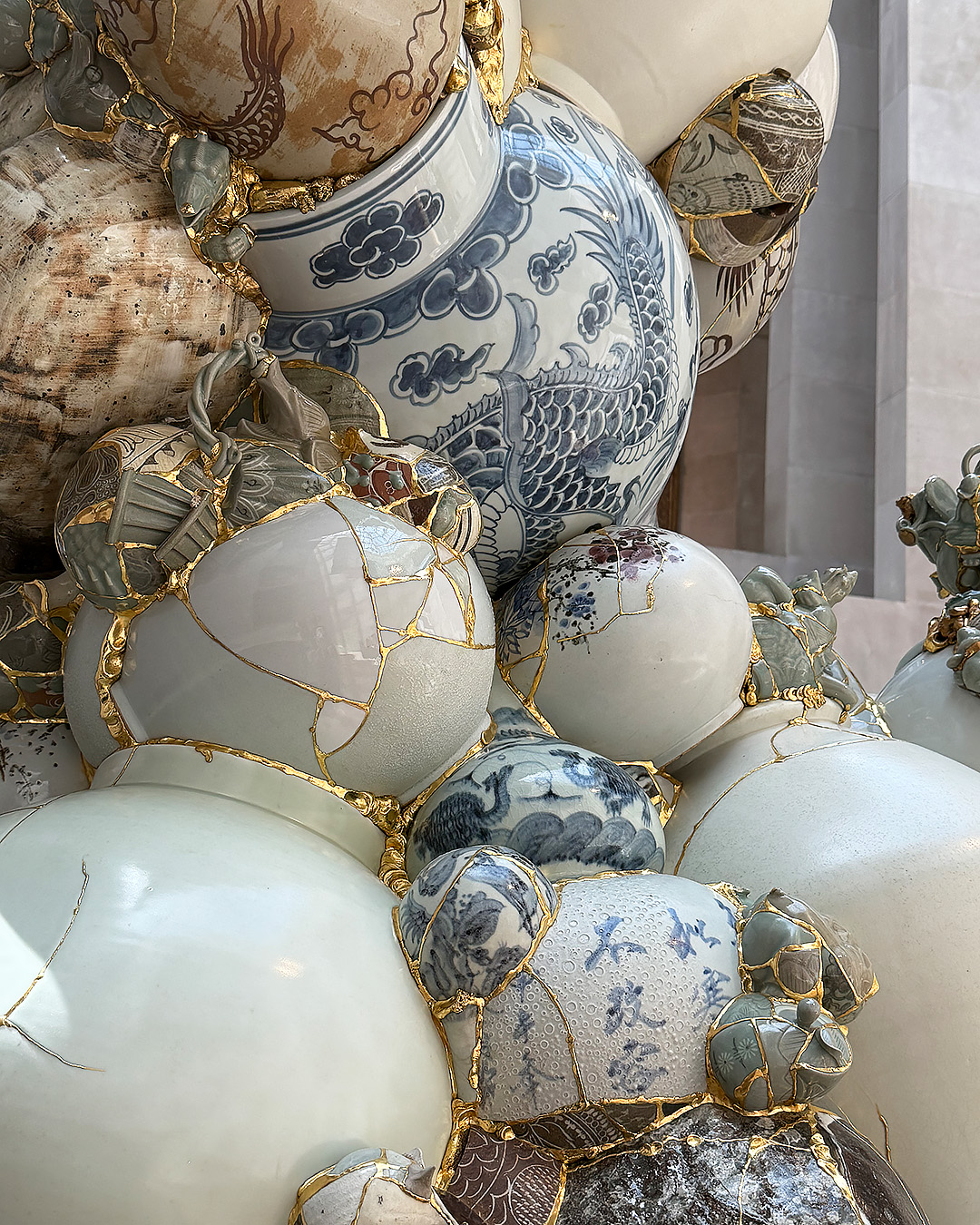
There’s still time to catch Monstrous Beauty: A Feminist Revision of Chinoiserie at The Met on view through August 17th. I was lucky enough to see it with my dear friend from Hamilton College, Sarah Hand. She has extraordinary taste and has been a fashion insider for over 30 years. While I was visiting New York, Sarah invited me to stay with her family in the fabulous Brooklyn brownstone that they renovated in Carroll Gardens. Sarah and I loved The Met’s genius reinterpretation of “pretty” chinoiserie. It was such a treat to see the exhibit with Sarah’s keen eyes.
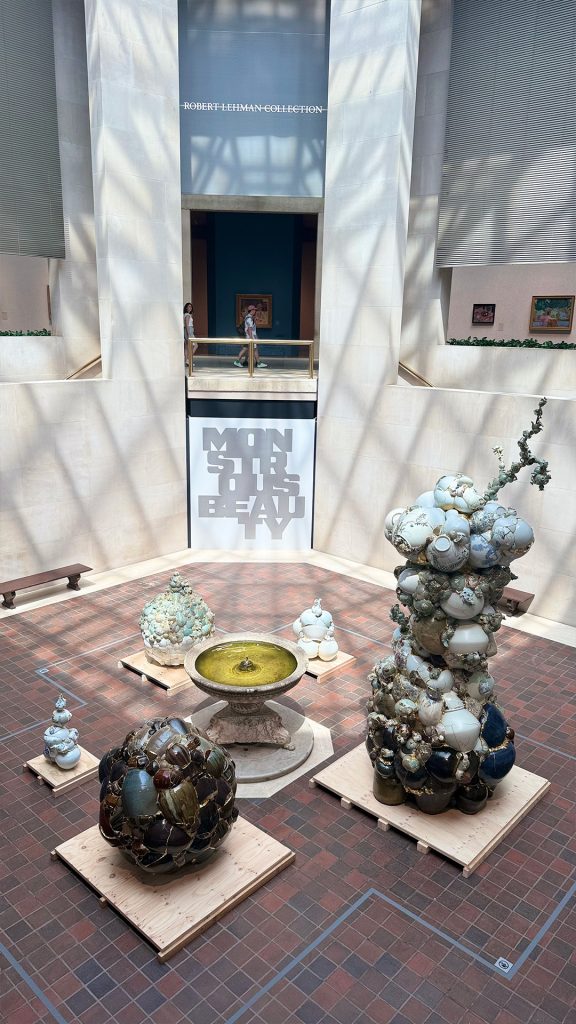
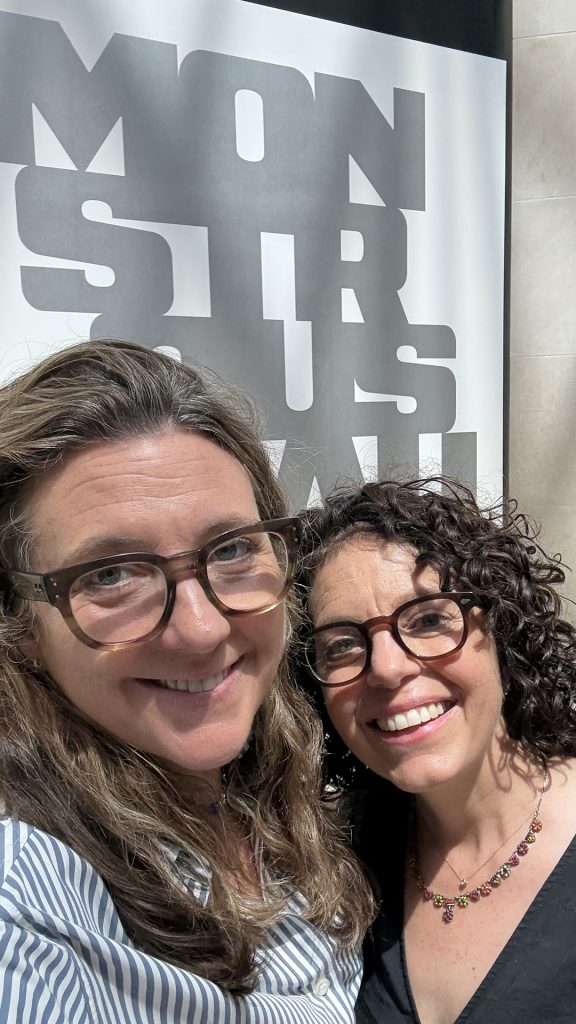
It was interesting to consider porcelain and Chinoiserie as vehicles encompassing “Europe’s fantasies of the East and fixations on the exotic, along with new ideas about women, sexuality, and race.” At PAGODA RED, we often toy with the notion that certain objects project notions of gender and this exhibit supercharged that theory.
I happen to love kitsugi and, for decades, have collected old idiosyncratic objects that celebrate rupture and beautiful repair. Yeesookyung is a sculptor from Korea who is widely regarded as the major figure in the contemporary expression of this practice. We learned that “Yee often heard her mother refer to damaged vessels like chipped rice bowls as negative signs, akin to a woman’s loss of dignity once ‘broken like a porcelain dish.’ Yee contends with these cultural ties between porcelain and women’s bodies by turning discarded (porcelain) remains into art. A technique of mending and repair is used to highlight rather than mask imperfections, sutures, and scars, the evidence of a life fully lived.” Her work in the show is of monumental scale, symphonically melding disparate porcelain with 24 karat gold leaf.
Kintsugi honors loved objects. I am over the moon for this kind of object appreciation, even as it is revealed with humble materials, like steel staples or wood. At PAGODA RED, we admire examples of mended furniture patched with meaning, such as a table repair in the shape of a lucky double gourd.
Sarah loves it too. “Kitsugi has had influence on fashion with upcycling. In the world of disposable trends, it’s nice to see sustainability celebrated and rise to the top — I’m a fan of special pieces where a designer adds a little something to vintage pieces then overdyes the pieces thoughtfully and creates something unique and one-of-a-kind as opposed to mass market disposable consumerism. At the moment, two of my favorite designers working in this way with beautiful and meticulous overdying and patchwork details are BLUE BLUE JAPAN and 45R.”
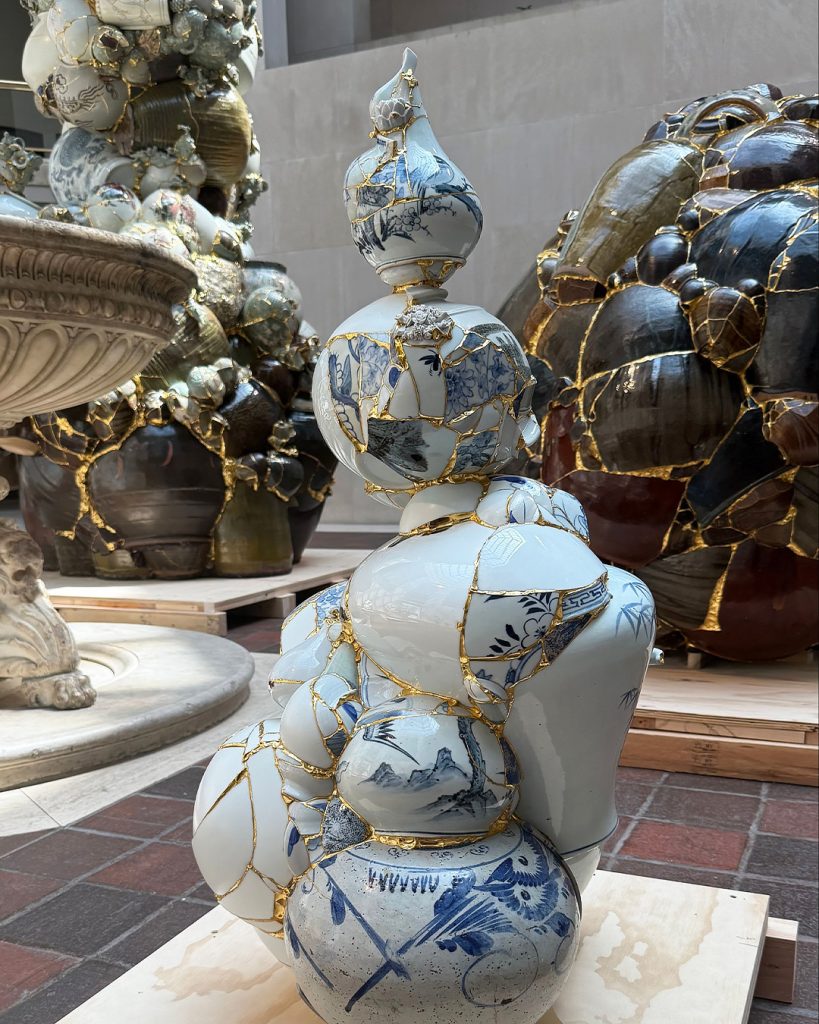
Yeesookyung, Korea
2022
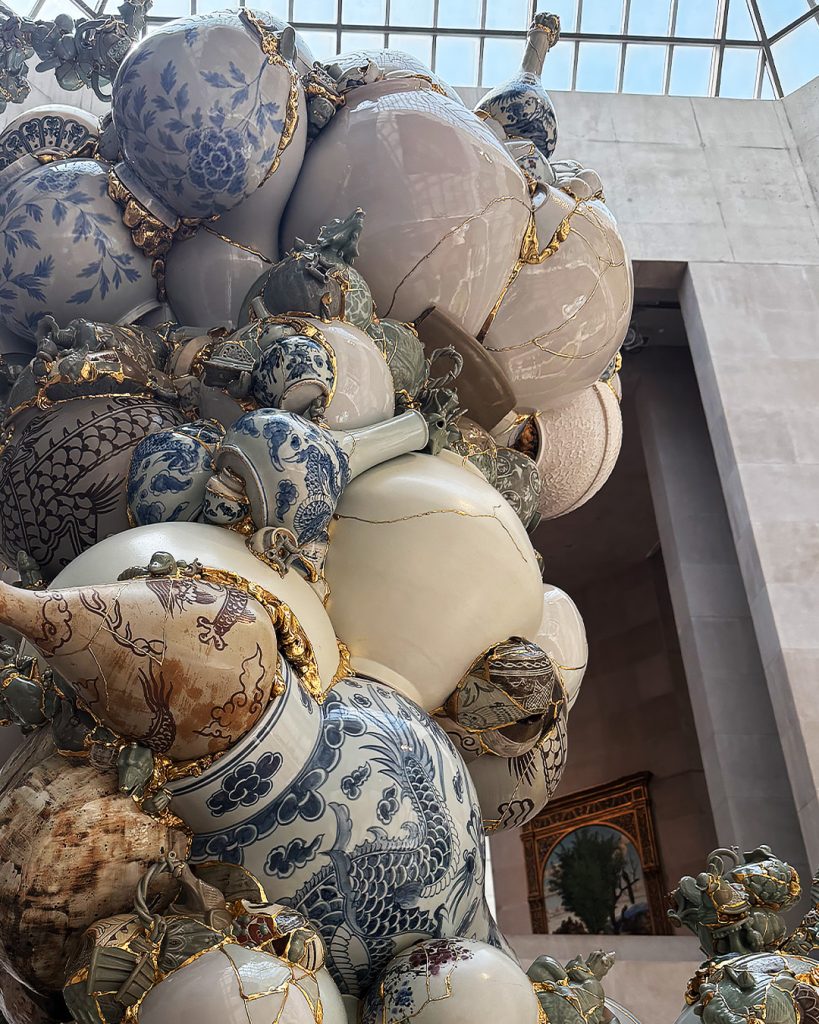
Yeesookyung, Korea
2017
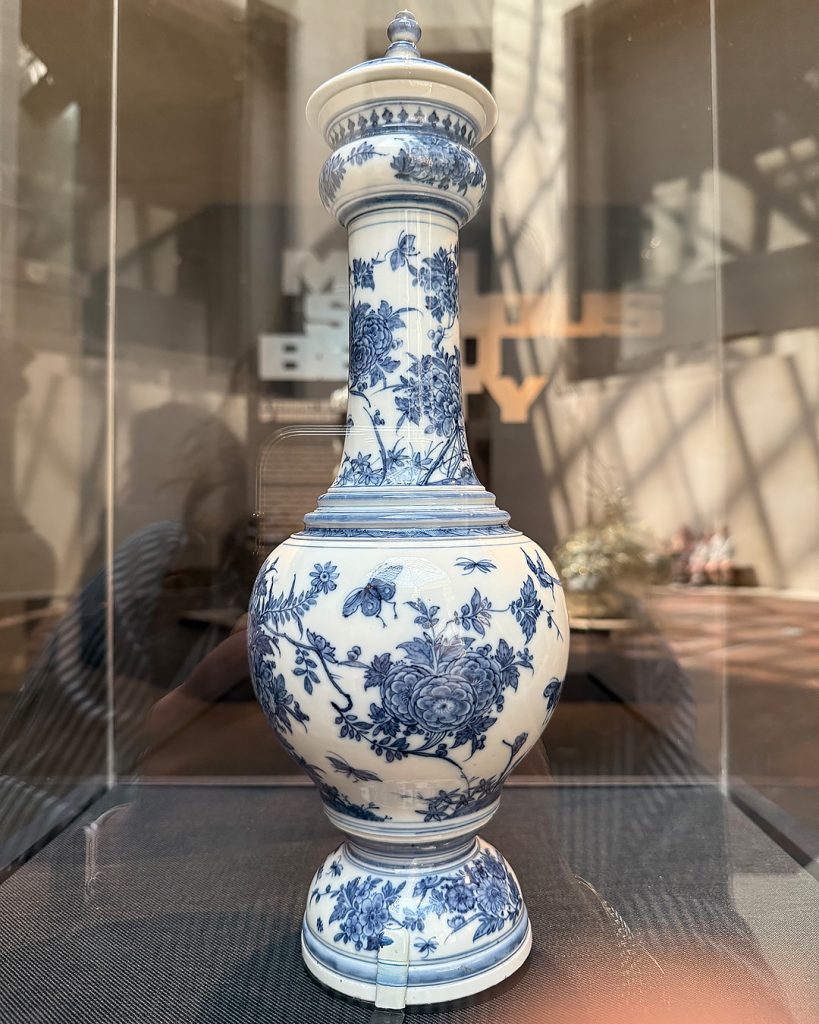
Meissen Manufactory
ca. 1725
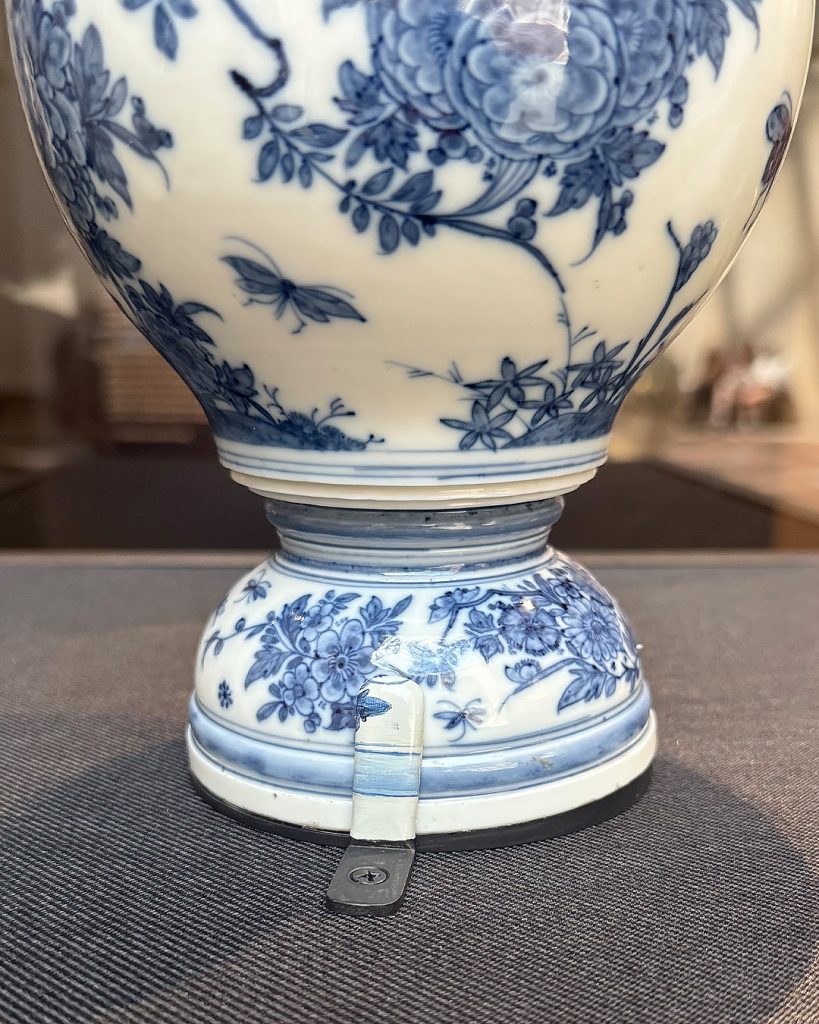
Sarah and I are both blue and white lovers and were struck by a Meissen vase included in the show. Meissen was the first company to produce porcelain in Europe, triggered by the “obsession” of Augustus II the Strong who was the founder of Saxony.
But, what really drew me to the 18th c. Meissen vase was not the decoration, history, or form, but the way its stabilizing bracket was painted like the porcelain to conceal it. Over the years, I’ve grown obsessed with elevated mounting and display, and this was executed with remarkable finesse.
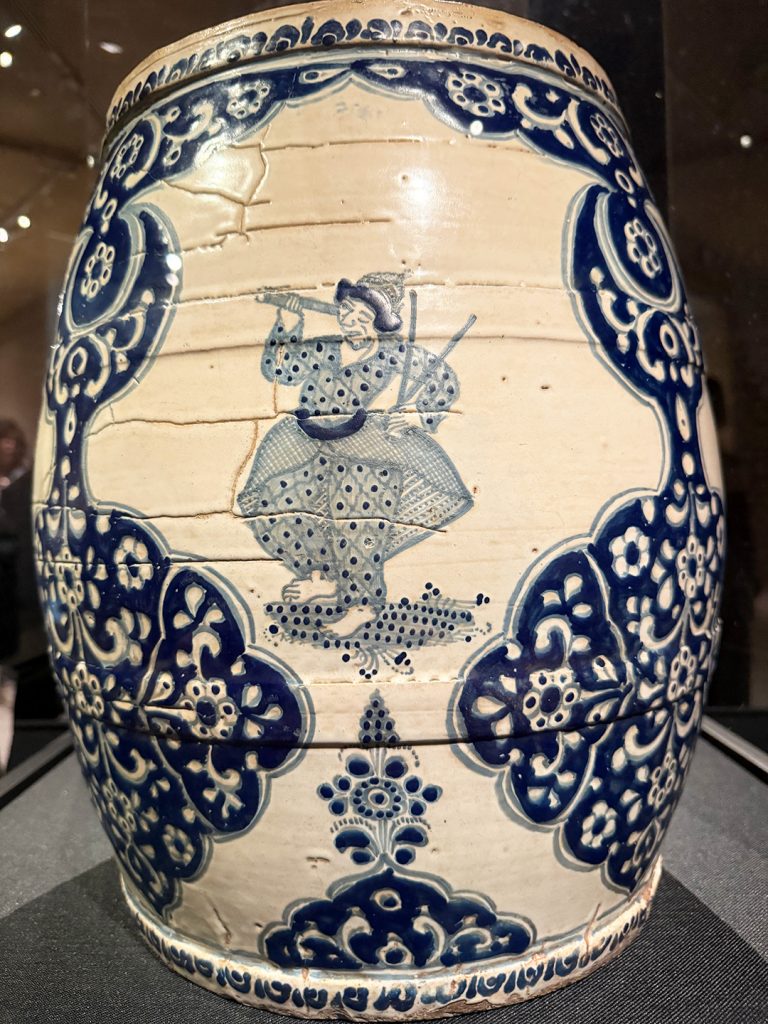
Mexico, ca. 1760
It is amazing to think how far and wide cultures in the world connect creatively. In the mid-18th century, the finest Chinese blue and white motifs even found their way to a Mexican tin-glazed barrel planter–part of the Met’s permanent collection and a wonderful inclusion in the show.
Sarah is influenced by art, media, and the streets for her work in men’s fashion. “I am always inspired by floral and chinoiserie motifs…and to see them through the ages and how they evolve regionally–the patterns emerge in France very differently than the way they do in the US… It’s fun to explore different perspectives on specific trends.”
Reverse paintings on glass, also called verre églomisé, are some of my favorite things. I’ve collected almost every chinese example I’ve encountered over the decades. I love their reflective quality, how the smallest details were painted first behind the glass, and how, generally, they portray women in fabulous dress. It was great to see unusual examples included in the exhibit.
Before we went to the show, Sarah showed me an 18th c. painted scroll she inherited from her late father, who was also in the fashion business. As we examined it, we figured it to be the story of silk production. The reverse glass painting in the exhibit, Mrs. and Miss Revell on A Verance, depicting two elegantly dressed women in their finest draped silks, felt like an extension of our morning discussion. But, given the concept of monstrous beauty, Sarah shared “what is on the surface is not always as it seems”.
Through the lens of the show, mirrors “are portals into another realm, where reflections on women’s changing perceptions of themselves appear alongside competing projections about who they were expected to be.”
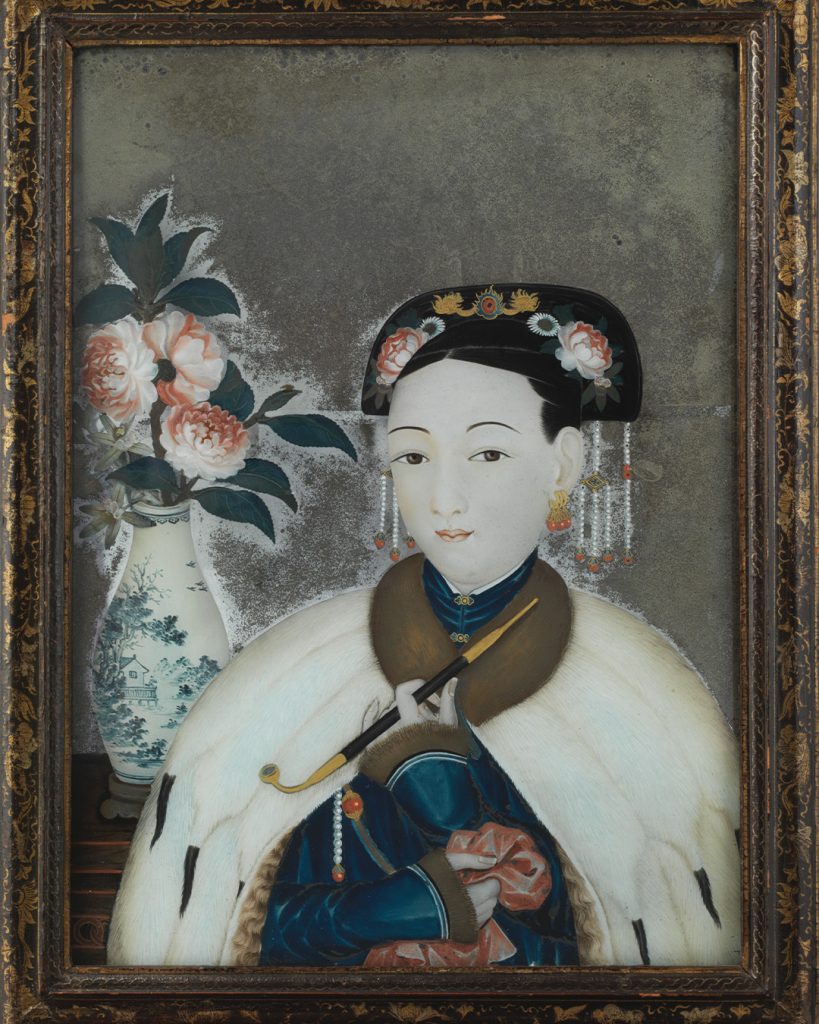
China, for the European market
ca. 1760–80
In all my years collecting, I had never considered the women in my reverse glass paintings the way curator Iris Moon did with this wonderful example of a Manchurian woman in a fur clawed cape and a pipe. She “looks boldly at us and demands reflection.”
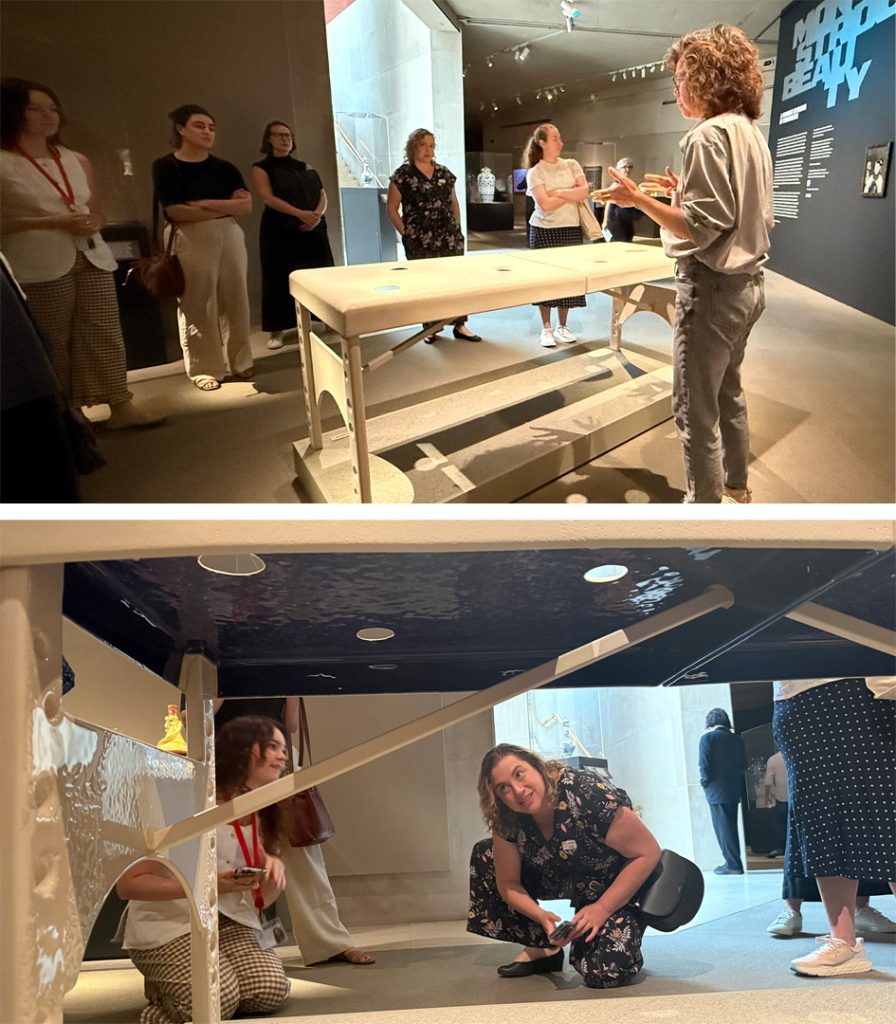
Patty Chang, USA
We were lucky our visit coincided with a private tour Moon was giving to another group, which gave us the opportunity to hear her talk about “Abyssal” by Patty Chang.
Moon explained how she reached out to Chang to create a contemporary porcelain work for the show and Chang replied that she had never worked in clay but would consider it. As a performance artist with no experience with ceramics, Chang worked as an artist in residence with Wisconsin’s Kohler company where she was supported by Kohler Foundry employees to realize her vision. On the heels of the 2021 violent Atlanta massage parlor shooting, where six of the eight murdered victims were Asian women, Chang created a porcelain massage table with an eerie raw texture.
The underside of the sculpture, Abyssal, is finished in a shiny blue glaze, completely different than the raw top. Chang’s intention is for the work, after the Met show, to be submerged beneath the sea, serving as a bed for coral to grow, and also to recall the historic oceanic transport of porcelain from Asia to the West.
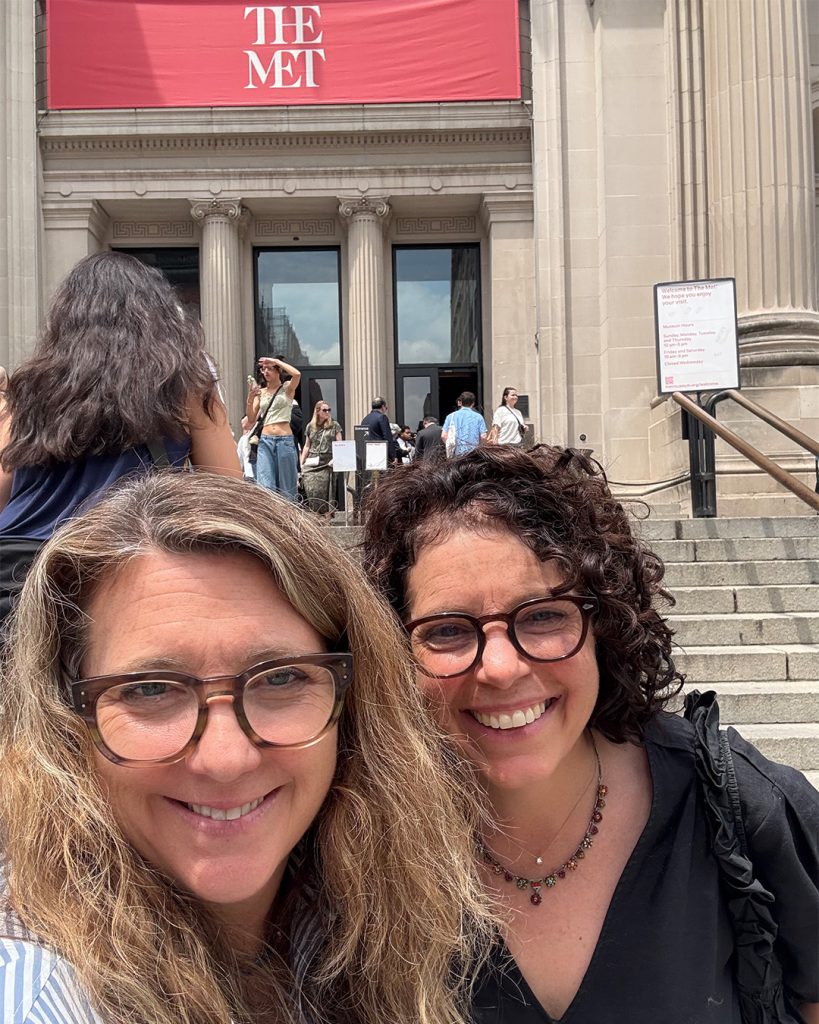
Sarah was impressed at how this multifaceted exhibit could be viewed so many different ways. “It’s fantastic that The Met, which I usually consider to bring more traditional approaches to curation, offers us the opportunity to explore chinoiserie in an adventurous way. The curator seized the opportunity to explore and brought us along on her incredible meandering journey.”
Monstrous Beauty: A Feminist Revision of Chinoiserie… On view at The Met Fifth Avenue until August 17th.
